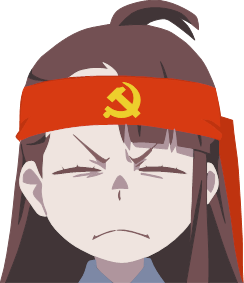Now that I have your attention, did anyone else start rewatching it after the thread about what version to watch the other day? I vaguely remember watching the old dub when it was first airing in the US back in the 90s, and watching the remastered dub now I'm surprised at how well it holds up, all things considered. Except for the heavy overuse of flashing lights as a cheap to animate special effect, that part fucking sucks since I have to either physically cover my eyes or alt-tab until it's through with it.
I also keep getting distracted trying to pick out all the little labor saving animation tricks they used and trying to figure out how they managed to make such janky animations actually look decent, as well as wondering why modern low-budget animation can't manage the same effect even though modern tools should make it even easier and faster to use the old stylistic tricks. Is it just a matter of janky cell animation needing a very specific set of skills that no one today cultivates in order to look good?
I've just gotten through the tree arc. Weirdly, despite being 46 episodes long the first season felt like it was fairly well paced for the content it had; there were definitely filler episodes but it didn't really drag all that much, and the in-episode pacing got better the further into it it got. In comparison the first arc of the second season felt like an absolute slog, despite being much shorter - most episodes felt like nothing really happened and the action scenes getting taken over by increasingly long reused move sequences got old fast. While that particular labor saving trick is understandable in context - you make one intricately animated sequence and then use it over and over and over indefinitely instead of spending more on bespoke animations - goddamn if it doesn't get tiring to watch.
There's also the issue that while overall it seems much better than one would expect something from the early 90s to be, there's some creepy shit with a central conceit of the story being that the 14 year old main character is the fated soulmate of a guy who seems to be in his early 20s because the moon despot did a Third Impact after some guys with swords ran to the moon on a cloud, and that their relationship is portrayed 100% positively with him being a moral compass who's helpful but never oversteps the main character's personal agency. I can't decide if it gets some credit for making him an impossibly perfect passive wish fulfilment object for the main character (and thus does better than the typical anime things where he would be the viewer insert and Usagi would be the viewer wish-fulfilment prize) or if that just makes it worse by narratively contriving to make a relationship that would be extremely creepy and predatory IRL ontologically ok.
Overall though, it's a decent nostalgia trip that's making me realize just how formative it was on my imagination as a kid, and even now is making me think a lot about the technical and structural parts. But if the pacing doesn't get better in the second arc of season two I don't know if I'll manage to get through it, and I might just stop and go watch the much shorter reboot instead.


I think it's more that modern tools incentivize a different set of time-saving tricks which combine together to give modern 2D animation its distinct look. When you have to actually draw every single frame, then every single frame is the output of an actual artist - but modern tools will have computers draw frames or at least certain details in those frames, which makes them put things on the screen without an artist adjusting it to make it look right.
You can definitely capture the look of older animation with modern tools, but it has to be something you push for from the outset.
Anime doesn't normally use software interpolation for in-betweens, it's usually out-sourced to animators in China, South Korea and the Philippines who are paid at an even more atrocious rate than Japanese animators.
They scan all the frames into the computer rather than take photos (like with cell animation), what they use the computer for is coloring, backgrounds, composition and then obviously effects and cgi- so you're right about what gives modern shows their look, it's the change in material production methods.